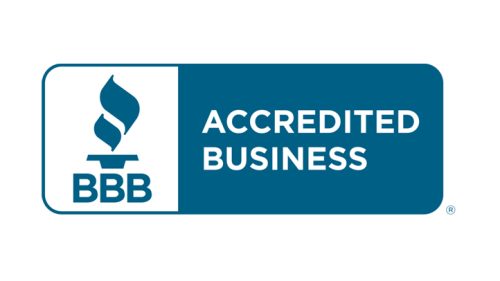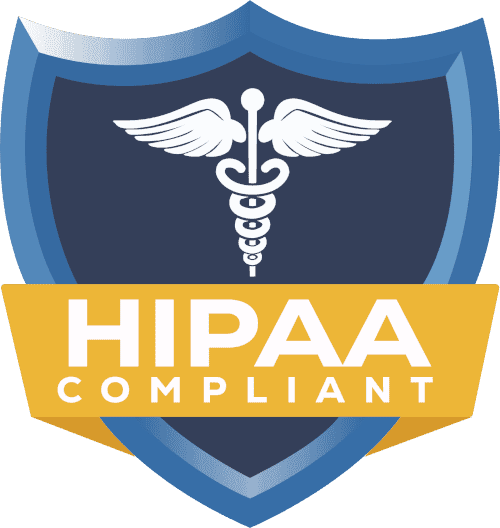Credentialing Telehealth Providers: Unique HIPAA and Regulatory Considerations

HIPAA is a collection of rules that protect patients’ private health information (PHI). These standards must be followed by all healthcare workers who use telemedicine. They also need to sign business associate agreements with tech businesses that fulfill HIPAA requirements. To get ready for telemedicine, you need to review procedures, assess risks, train healthcare staff, and make deals. Following HIPAA rules is a must, and breaking the law can lead to harsh punishments. To protect patients’ privacy and mental health, healthcare groups must be careful and private with the information they collect about them.
It’s crucial to know the unique HIPAA and Regulatory Considerations for Credentialing Telehealth Providers and to remain in compliance, safeguard patient safety, and ensure excellent treatment.
HIPAA and Telehealth
HIPAA is an abbreviation used for “Health Insurance Portability and Accountability Act.” It specifies national standards for the protection of protected health information. In the United States, there are stringent regulations that mandate the nondisclosure of patients’ health information. Physical and virtual medical treatments are both covered under the Privacy Rule. Patients’ protected health information (PHI) must be accessible only for health care-related reasons, kept private, and not shared without the patients’ consent, according to the rule.
Also outlined in the Privacy Rule are the following rights of consumers: access to and a copy of one’s health records; authorization to transfer one’s protected health information to another party; and the right to seek corrections to one’s records.
Telehealth and HIPAA Compliance
Telehealth credentialing is a lot more than just the standard techniques of validating the qualifications of medical professionals. It is a complete approach that considers things like how well you know technology, the differences in licensing rules across jurisdictions, and enhanced privacy protections for virtual care environments. Businesses have to carefully handle a tangled web of safety laws that originate from healthcare legislation and digital technologies.
Credentialing for telehealth includes making sure that a healthcare professional has the proper skills, credentials, and licenses to provide care online. This method ensures that
- Providers who offer online care meet the licensing requirements of each state.
- They are obeying privacy laws set by the government, such as HIPAA.
- They satisfy the standards that payers have for video payments.
- They have the professional training they need to provide treatment via the internet.
The stages are like those for regular credentialing that happens in person, but telemedicine makes things a little more complicated, particularly when it comes to getting a license in another state, using technology safely, and telehealth-specific payment regulations.
Credentialing Telehealth Providers: Unique HIPAA and Regulatory Considerations
The candidate’s practical expertise, educational background, and professional references are the most important components of a traditional license. Proof of familiarity with digital privacy regulations, technological know-how, and virtual therapeutic requirements are necessary for a telehealth license. These physicians and nurses need to show that they are proficient in fields other than medicine. Companies also need to show that they can handle safe online interactions and protect patient data on all digital channels.
HIPAA Compliance in Telehealth Credentialing
The certification process for telemedicine services is complicated by the Health Insurance Portability and Accountability Act. Particularly in virtual settings where real security might not be as strong, businesses must ensure that any prospective service providers understand how to meet HIPAA regulations.
Administrative Safeguard for Telehealth Providers
Telehealth professionals need certification. They must know the key safety rules for virtual care. It covers security education. It ensures HIPAA compliance. It includes data backup. It focuses on technology preparedness. Managing access in virtual settings is tough. Providers must manage encryption keys. They need to set unique user identification rules. Automated logoff procedures are also necessary.
Physical Safeguards in Virtual Environment
Telehealth has changed safety measures. Traditional methods are now outdated. Credentialing makes sure providers keep workstations secure. It restricts access to home-based services. It also sets limits on computer usage. It includes secure internet connections. It also covers lighting and private spaces. It includes managing electronic communications. It covers media usage. It also involves telemedicine session recordings.
Technical Protections and Technology Competence
A telemedicine service license needs tech safeguards. It requires skill in access control systems. Unique monitoring controls are essential. Security measures are a must. Credentialing includes private messaging. It uses multi-factor login. Patient validation is needed for virtual appointments. It tracks telehealth meetings. Secure platforms are essential.
Interstate Licensing and Regulatory Compliance
There are a lot of rigorous licensing standards that must be followed when credentialing someone for telehealth, since it may be utilized in more than one state. The Interstate Medical Licensure Compact accelerates the process of getting a license for eligible physicians. Credentialing organizations must know which states are involved and ensure that providers have the proper permits for their jobs.
Compact VS Non-Compact State Requirements
Credentialing for telehealth providers must adhere to specific laws in each state, with compact states having easier access to licenses. Non-compact states require multiple licensing forms, and credentialing systems must track and inspect these permits. The rules for telehealth vary across states, with some jurisdictions requiring special permissions and guidelines for doctor-patient collaboration. Credentialing procedures must consider these diverse demands and ensure workers understand the standards applicable to their practice areas.
DEA Registration and Controlled Prescriptions
The Ryan-Haight Act affects telehealth providers. It changes how they get licensed. This is important for prescribing illegal drugs. Credentialing must make sure physicians know the rules of telemedicine. This includes in-person tests and special registration. Changes have made prescribing easier. Providers need to keep up with new restrictions and emergency announcements. They must also follow federal DEA standards and state drug laws.
Technology Platform Compliance and Vendor Management
Telehealth providers need a license. Also, ensure they understand how to use specific tech platforms. They should know the rules vendors must follow. Providers using telehealth systems from other companies must show they understand Business Associate Agreements (BAAs) and comply with HIPAA rules.
Platform-Specific Training and Certification
Telemedicine software includes special security measures. Providers need proper training on these platforms and their security features. They need to handle patient data. They must keep it safe. Credentialing must evaluate the platform’s strengths and weaknesses. Firms should know how to add extra security measures when necessary. This procedure helps providers know the platform’s limits. They can then take steps to protect themselves.
Business Associate Agreement Understanding
Telehealth firms using third-party sites must understand their responsibilities under Business Associate Agreements. Credentialing approaches must ensure service providers understand how to verify platform compliance. They need to report security incidents. They may also need to add extra protection to their contracts.
Documentation and Record-Keeping Requirements
People with telehealth credentials fill out different forms. This is unlike those who receive in-person treatment. Providers must learn to keep accurate records of virtual chats. They need to respect HIPAA standards. They also have to follow the paperwork rules of each state.
Session Documentation Standards
Credentialing procedures must take into account the unique paperwork needs for virtual meetings. Providers need to know how to maintain track of the quality of discussions over the phone, get permission from patients to use telehealth services, and handle any problems that come up during virtual examinations.
Audit Trail Requirements
Providers need to know how to keep and handle the long audit trails that telehealth systems leave behind. Credentialing should make sure that doctors know how to get to audit logs, know that it’s their job to keep an eye on who has access to patient information, and can see patterns of weird behavior that could mean there has been a security breach.
Managing Patient Privacy and Consent
To provide telehealth providers accreditation, you need to make sure they know about the stricter privacy rules and permission management systems that are utilized in virtual care environments. Providers need to know how to explain patients’ privacy rights in virtual settings and how to gain and keep the necessary consent for telehealth services.
Understanding Consent for Telehealth Services
When it comes to telemedicine, getting approval from a doctor is not enough. They also chat about tech. Credential checks must make sure that doctors can talk to patients about the limits of technology, privacy issues, and other treatment options.
Talking About Privacy Risks
People who offer video services need to tell patients about the privacy dangers that come with them. Credentialing should look at how well doctors can explain the boundaries of encryption, safe ways to talk to each other, and what patients can do to protect their privacy during virtual visits.
Ongoing Monitoring of Compliance and Revalidation
Telehealth credentialing needs robust ways to keep an eye on things because technology and rules change so often. Companies need to find a way to keep track of how well suppliers are meeting shifting needs and make sure they know about new rules and platforms.
Requirements for Continuing Education
Because telehealth standards and technology are continuously changing, qualified professionals need to keep learning. Organizations should find means to maintain track of doctors’ ongoing training in telehealth and make sure they know about any changes to the law. This means keeping an eye on changes in HIPAA rules that influence telemedicine and changes in state laws that could modify what practices need to do.
Quality Assurance and Performance Monitoring
The licensing procedure should aid telehealth providers by offering them tools to make sure their services are good. This means making sure that telehealth providers obey the standards that apply to them, checking the technical quality of virtual chats, and finding out how happy patients are with their online care.
Risk Management and Liability of Telehealth Providers
Each telemedicine software has unique security and safety measures. Credentialing should ensure providers have proper training on the platforms and security features.
- Providers should understand the limitations of each platform and how to implement additional security measures.
- Legal risks and how to handle them should be considered when providing telehealth credentials.
- Insurance malpractice coverage should be ensured for the video job and policy restrictions or exclusions.
- Providers should be trained in handling tech issues during video sessions.
- Implementation of best practices should be adopted, including checking technology, ensuring legality, and tracking it over time.
- Credentialing committees should be knowledgeable about telehealth regulations and technical requirements.
- Companies should review their IT infrastructure to ensure it supports legal virtual care delivery.
- Future considerations and emerging trends include AI integration, improved security technologies, and the need for adaptable credentialing procedures.
The Strategies to Acquire Telehealth Providers’ Credentialing
To keep within the law and perform properly, healthcare organizations should do the following:
- Documentation: List the things you need to do to become certified for telehealth. It includes regulations for each state, guidelines for each payer, and HIPAA security standards.
- HIPAA-Compliant Technology: Before physicians start doing virtual healthcare, be sure that all systems are HIPAA-compliant.
- Up-to-Date Database: Make sure your regulatory database is always up to date. To avoid utilizing outmoded means of getting a license, stay up-to-date on state telehealth regulations and payer requirements.
- Regular Training: Providers should be aware of the latest requirements of HIPAA for telehealth, cross-state care, and how to keep patients safe online regularly.
- Conduct Regular Audits: Before conducting audits, review credentialing files and telehealth procedures to identify instances of non-compliance with regulations.
What Happens If You Don’t Obtain the Right Telehealth Credentials?
If you don’t correctly identify telehealth personnel, this might happen:
- Claims are denied, and revenue is lost.
- Fines for not following state or HIPAA standards.
- Losing or having a license suspended.
- There is a danger to reputation and patient confidence.
Conclusion
It’s important to know the rules of HIPAA. Also important are national licensing laws. For telehealth credentialing, you must follow the rules for technology. To be successful, follow explicit steps. Pay attention to what you need now and what will be popular in the future. Businesses that spend money on telehealth licensing systems can provide better online care. They can obey the rules and keep patients safe.
Credex Healthcare is known as the experts credentialing i the US. You can safely offer telehealth while staying compliant with all the rules and regulations. We will take care of all HIPAA problems and will keep up with the rules and regulations for your practice at the state and federal levels.
FAQs
Q: What is healthcare provider credentialing?
Credentialing is the process of verifying a healthcare provider’s qualifications, licenses, and compliance. The process is done before a provider can deliver patient care.
Q: Why is HIPAA important in provider credentialing?
HIPAA protects the data and information of both providers and patients that is acquired during licensure.
Q: How frequently do businesses need to receive new credentials?
Most payers and government entities require you to acquire fresh credentials every two to three years.
Q: Is it possible for a service to function before they have all of its credentials?
No, most of the time. If you work without the necessary credentials, you might have your claims turned down and breach the regulations.



















